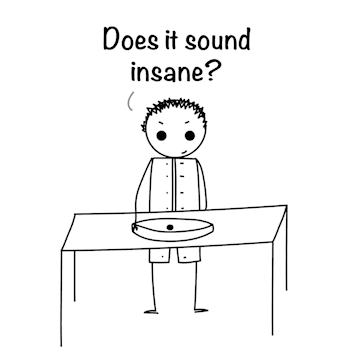Growing a brain
Mark - head of the MiCO Platform project - is not really growing a brain. At least not a brain like yours and mine. Because he can’t (at least not yet).

Minibrains
The brain that Mark is growing is a minibrain. It doesn’t really look like our brain, but it’s grown in the lab from human stem cells. These cells can split into several identical cells and each cell can then develop into cells with specific functions.
When Mark is working in the lab, he ‘tricks’ the stem cells into believing that they should become brain cells. These cells then look and behave much like brain cells in our bodies. Hence the term minibrain.
A brain without a body
Although the minibrains have many of the same characteristics as our brain cells, they don’t have bodies to control. So, what are they good for? Here are two main reasons to grow minibrains:
1. TEST OF DRUGS:
Today, many drugs are tested in animal models. But quite a few drugs that have been found effective in animals do not work in humans. We are simply too different. The minibrains, however, are grown from human cells and they are therefore an advanced model for the human brain. This model can provide more accurate test results before testing drugs in patients.
2. MIMICK THE PATIENT:
If you’re a patient suffering from a neurological disease, you may not respond well to the same treatments as other patients. Even if our brains are (overall) similar, they are definitely not identical. If we can grow patient-specific minibrains to test a range of drugs before starting treatment, it will be possible to avoid side-effects and non-effective treatments.
